
Contact
Biological mapping
Børge Holte
+47 77 60 97 53
Geological mapping
Terje Thorsnes
+47 73 90 42 75
Bathymetry
Hanne Hodnesdal
+47 51 85 88 23
Information officer
Beate Hoddevik Sunnset
+47 55 23 85 16

Published: 22.04.2009 Updated: 14.12.2022
The research vessel left Tromsø on April 6th, 2009 to head north and will be sampling until April 28th. The cruise aims at covering around 100 video stations, from which 26 stations will also have environmental and biological sampling done (full station). The transits between stations will have high resolution seismic profiles collected. As of April 14th, 36 video transects and 6 full stations were collected. The data revealed a variety of geological features as well as occurrence and behavior of mega fauna.
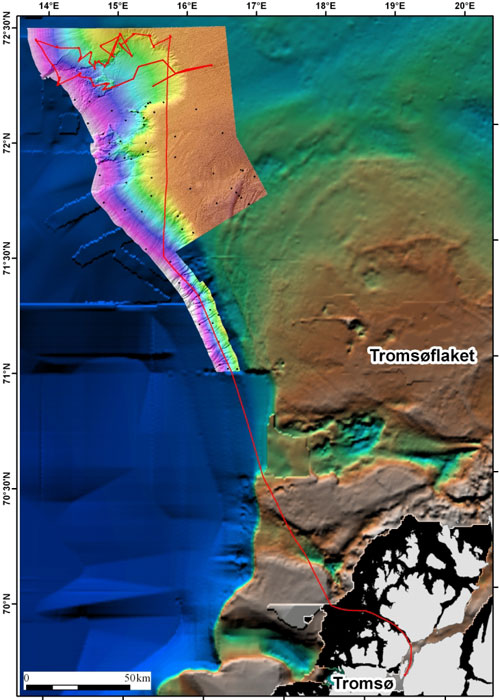
Figure 2 shows the location of two TOPAS seismic transects between stations 383-384 and 385. The first transect begins on the continental slope at the western edge of the Bjørnøya Slide Scar (A) and continues perpendicularly into the slide area (B). The second transect (B-C) runs upslope into the slide area. The start of the transect A-B seems to correspond to the location of an older slide scar cut by the younger Bjørnøya Slide Scar.
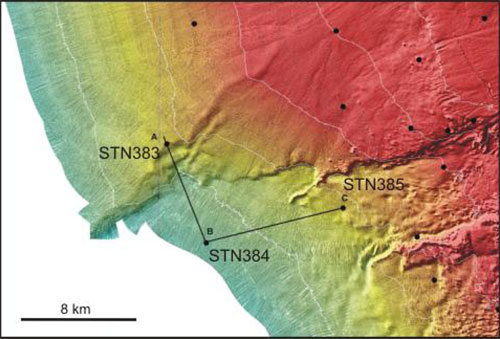

The seismic transects shows 5 distinct units or facies (1-5) (Fig. 3). Units 1 and 3 are well-stratified indicating that regular sedimentation was happening at the time of deposition. The top 2 m layer of unit 1 seems to correspond to post-glacial sedimentation. It is bounded by a much stronger basal reflector. The units 1 and 3 are respectively about 10 m and 20 m thick. Their characteristics suggest that the units, except the first 2 m of unit 1, could correspond to glaciomarine ice-distal sediments deposited during the last glaciation. These units also show areas of gas masking or venting from the deeper sediment units to the surface.
Unit 2 is homogenous, transparent, and up to 5 m thick. It is present, in places, between units 1 and 3 and pinches out in profile B-C to let unit 1 comformably overlay unit 3. The contact between unit 2 and 3 appears as an erosional uncomformity. The characterictic of its basal contact combined with its transparency suggest that unit 2 might correspond to fine slide material.
Unit 4 is slightly stratified, but shows breaks in the reflectors, possibly caused by the heterogeneity of the sediments (coarser sediments). The characteristics of this unit and stratigraphic position suggest glaciomarine ice-proximal sediments.
Finally, unit 5 is the basement unit. It is characterised by its homogeneity and non-transparency, which suggest till material.
In summary, these transects show a nice glacial sequence intercepted potentially by some sliding activity.
Whereas the geologists get excited about the structures lying beneath the sediment surface, the biologists excitement lies more within the top of the sediment. Transect R383 showed a gravelly sandy seabed with cobbles and boulders (Fig. 4). The fauna is dominated by detritus-feeding species living in the uppermost layers as well as the sediment surface and brittle stars (ophiuridae) were observed in high numbers, up to 150 individuals per m2, (figure 5 and 6) but also by filter-feeding species such as Octocorallia (Fig. 7 right), bryozoans, hydroids, sponges, was taking advantage of the higher current velocities.
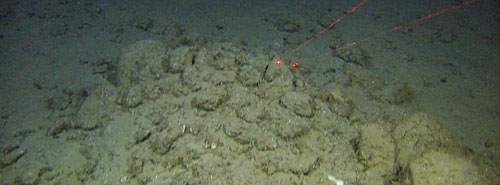
Figure 4. Gravelly ridge in gravelly sandy area.
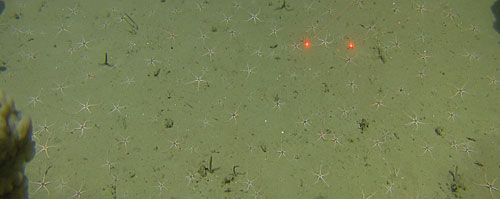
Figure 5. Brittle star city. Brittle stars are well known to occur densely on the seafloor. In this case at transect R383 at approximately 950m depth.
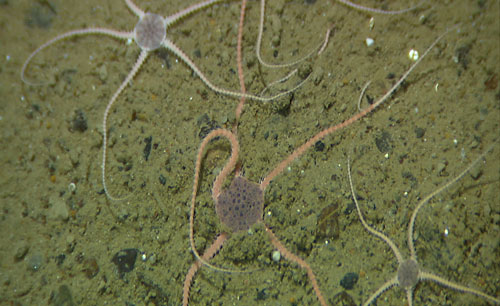
Figure 6. Details of the brittle stars.
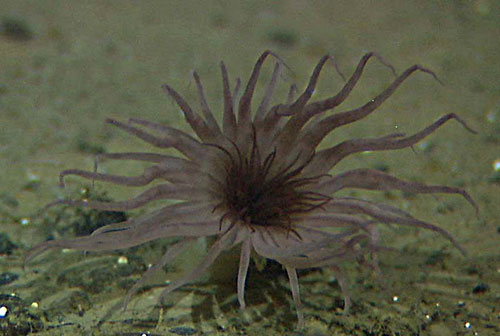
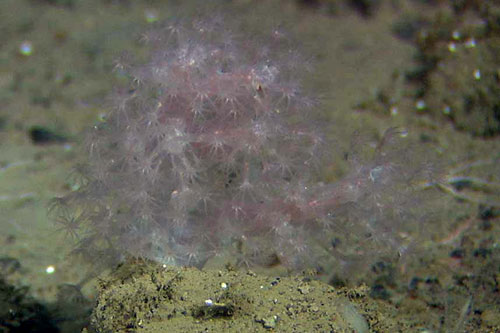
Figure 7. Examples of spectacular cnidarians species at transect R383 at approximately 950m depth. To the left is a cerianthid anemone (belongs to hexacorallia as does the stony corals) while the right is a soft coral belonging to octocorallia, most likely Gersemia rubiformis.
A spectacular finding of this transect is the presence of Gorgonocephalus or basket stars (Fig. 8), belonging to the brittle stars (Ophiuroidae). These are found holding to structures rising above the seafloor, in this case large boulders, in order to filter-feed. This specimen measures approximately 50 cm across (laser points being 10 cm apart), but they can grow up to 70 cm with a disk span of 14 cm. Another spectacular species recorded was the carnivore glass-sponge (Hexactinellida) Chondrocladia. It was recorded at approximately 950m depth and has a special architecture of balloon-like structures that are used for capturing prey (Fig. 9).
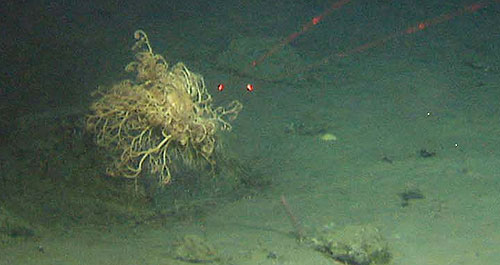
Figure 8. A Gorgonocephalus (a brittle star) perched on boulder in gravelly sand area at transect R383.
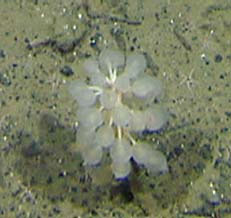
Figure 9. The carnivore glass-sponge (Hexactinellida) Chondrocladia with its special architecture of balloon-like structures that are used for capturing prey. This species was recorded from approximately 950m depth at transect 383.
Transect R384 and 385 was characterised by rather soft sediments (Fig. 5 and 6) and brittle stars (ophiuridae) were observed in high numbers. On transect R385, sea spiders and brittle stars were frequently recorded as creeping and running on the sediment surface (Fig. 10). However, similarly to the previous transect, several filter-feeding species taking advantage of the higher current velocities were observed. Among these animals was an "unidentified sabellid polychaet". These polychates live in tubes and their head is mostly concealed by feathery branchiae (Fig. 11).
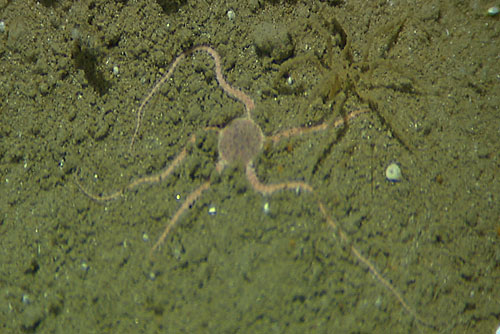
Figure 10. Sea spider (Pycnogonida, upper right corner) and brittle stars (Ophiuroida) running and creeping on the sediment surface, in this case at transect 385 at approximately 900m depth.
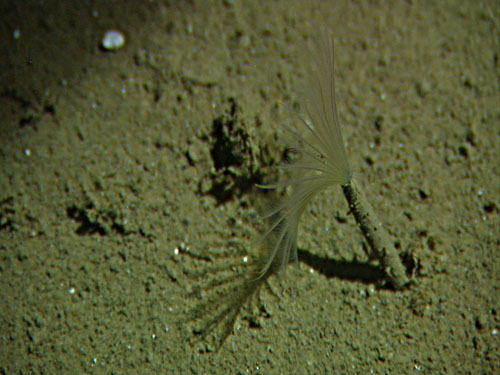
Figure 11. An unidentified tube living sabellid polychaet with its head concealed by feathery branchiae.